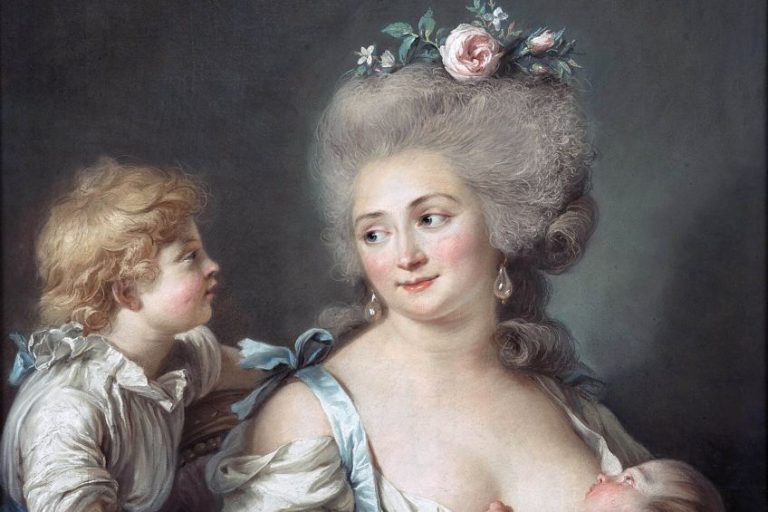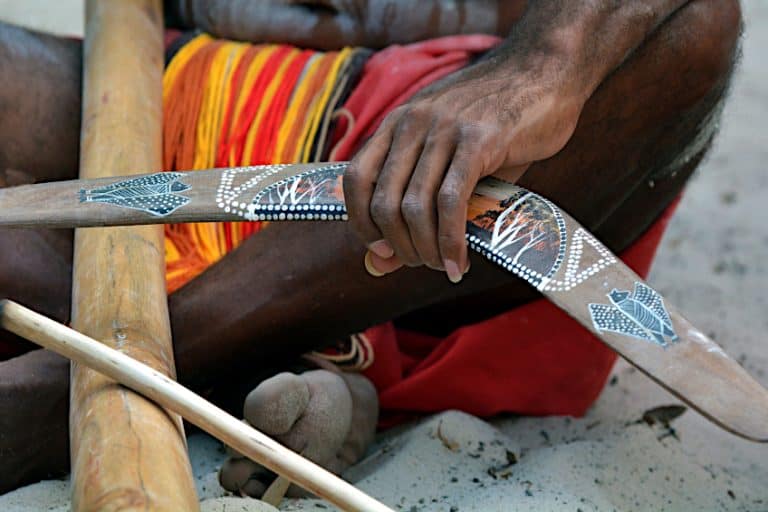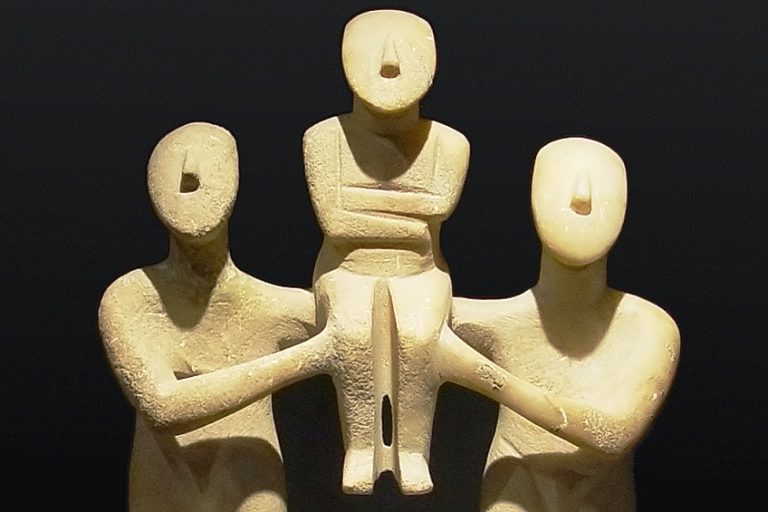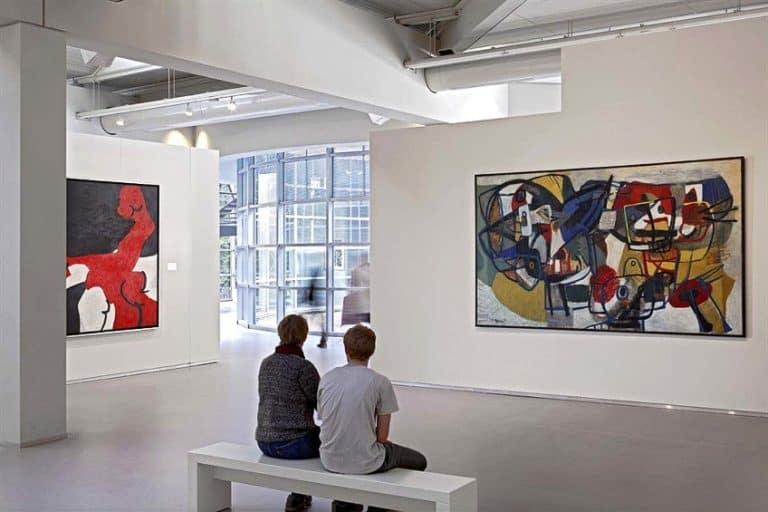German Art – Trace the History of Art in Germany
What does the history of German art look like, and which key art movements and styles emerged from this country? German art history is complex given its political history and place in art as the home of one of the world’s earliest examples of figurative art. In this article, we will take a look at the history of German art, from prehistoric finds to the development of painting, key art movements, art styles, and major influences that shaped German art. Read on to learn more about the fascinating developments of art in Germany!
An Introduction to German Art
What is German art, and when did it begin? When reviewing the term “German art” in retrospect, one might be quick to jump to examples such as the figurative sculptures of Upper Paleolithic art, which were discovered in 2008. Our knowledge of prehistoric German art in this sense is fairly recent and you would not be wrong to include such finds in the German art canon. However, it is important to take note that since 35,000 years ago, the development of German art also relied on the art produced by German-speaking regions. Germany itself had only established its borders as a single state in the 19th century, which is fair to conclude that it is a historically recent event and any artwork preceding it is still considered as part of the origin and evolution of German art.
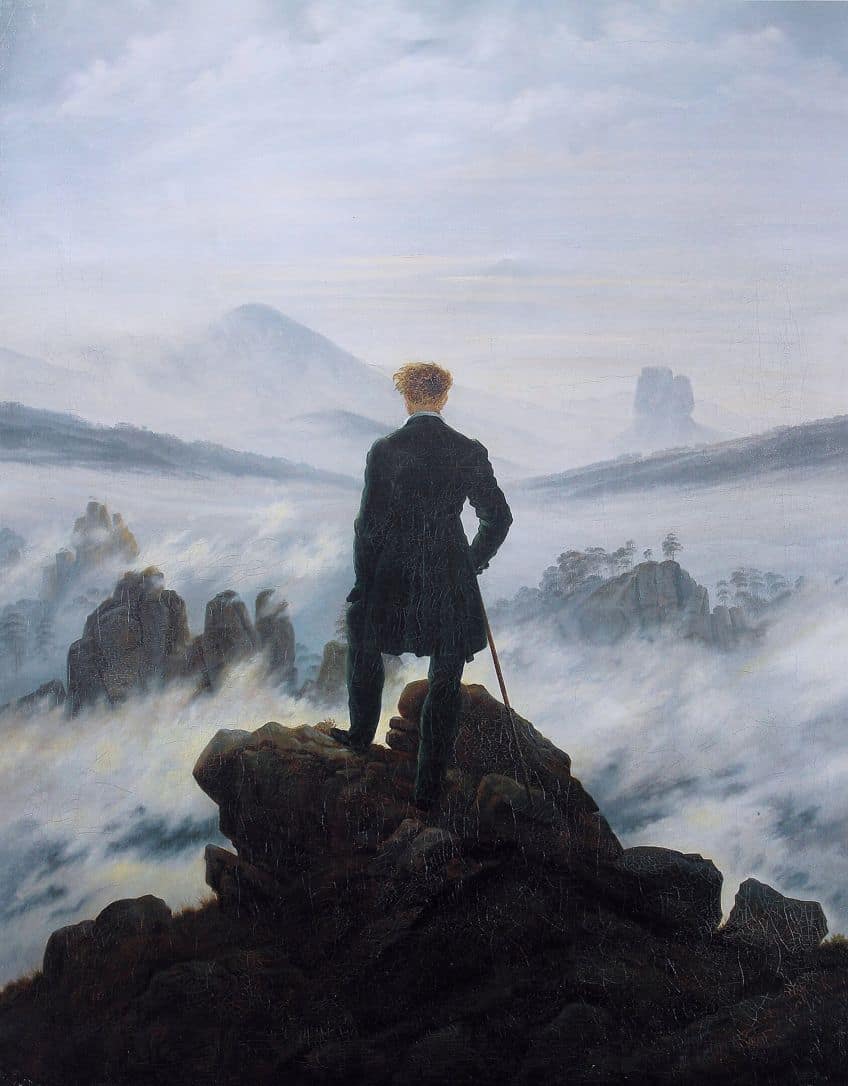
In European art history, the Italian Renaissance is often referenced as the birth of Western art itself and the home of many of the world’s most famous painters and sculptors. The German Renaissance is one such chapter that is not so often publicized in terms of the role that it played in aiding the influences of the 15th and 16th-century art styles of the Northern Renaissance. To contextualize German art and ensure you develop an understanding of how certain influential art styles came to be, we have included a selection of the most impactful developments in German art history that gave rise to names like Albrecht Dürer, Hans Holbein the Elder, Johann Baptist Zimmermann, Max Liebermann, Marianne von Werefkin, George Grosz, and many famous post-World War II artists.
Prehistoric German Art
The earliest developments in German art spawned from the first discoveries of figurative sculpture give us a glimpse into the early forms of representational art. Art produced by early humans from the Upper Paleolithic era includes prominent finds such as the Venus of Hohle Fels (35,000 years BP), which was uncovered in 2008 and was sculpted from a mammoth’s ivory. Another example of image-making from this era is the Venus of Willendorf (24–22,000 BP), which was discovered close to the Austrian border and is thought to represent female sexuality, fertility, and perhaps human relationships to the environment.
The Bronze Age revealed the use of complex materials such as gold, preserved acutely in the form of golden hats.
This exposed the history of metallurgical skills in Germany and posed questions to scholars about their purpose. A famous example of these iconic golden hats is the Golden Hat of Schifferstadt, which was found in 1835 in southwest Germany and measures roughly a foot high. Through these discoveries, we can add pieces to the ever-growing puzzle of prehistoric art. Moving to parts of Europe like Eastern France and West Germany, cultures of the Iron Age such as the La Tène group left behind many artifacts that showcase the artistic abilities of their people and have been discovered at sites like Reinheim and Hochdorf.

Celtic culture also contributed to German art in regions like Glauberg, Manching, and Heuneburg, where elite burial grounds were found to contain many interesting artifacts. After the Roman conquest, art in Germany was left in the hands of artists who worked in creative centers despite the Limes Germanicus that separated the Roman Empire from the Germanic groups between 83 and 260 CE. One of the most important Roman pottery workshops was Rheinzabern, which was the site of German pottery production and was widely distributed via the Roman Empire.
The German Middle Ages: The Carolingian Renaissance
In Medieval German art, one of the leading types of art was Carolingian art. Carolingian art was a product of the Frankish Empire that thrived between 780 and 900 CE. The empire was led by Charles the Great, who was known as Charlemagne. This art period spanned more than 100 years, surpassing Charles the Great and his heirs, and was known in history as the Carolingian Renaissance. To help you understand the context of the Carolingian Renaissance, it is useful to grasp that it was firstly, one of three medieval renaissances and a period of cultural activity within the Carolingian Empire. The empire spanned Central and Western Europe throughout the early Middle Ages.
So, what did German art styles from this period look like? Carolingian art was created by and for a court circle managed by Imperial patrons.
This type of art spanned several regions, including northern Italy, the Low Countries, France, Austria, and Germany. In these art centers were also Byzantine artists who contributed to the production of art for important monasteries. For a brief period, it is also understood that Carolingian art drew from classical Mediterranean art and Northern art styles, which empowered more figurative works, thus resulting in the birth of more Romanesque and Gothic art.
Later on, German art styles from the Carolingian era evolved to encompass Ottonian art. Around 800 CE, Charlemagne was crowned the Holy Roman Emperor, which saw the renovation of Roman culture and its re-education across the West. He sought to enhance Germanic art called Migration period art in a way that improved its storytelling capabilities. He also embraced the rejection of iconoclasm and pioneered the first Christian monumental religious sculpture. One of the highlights of Carolingian art was the illuminated manuscripts and small ivory sculptures.
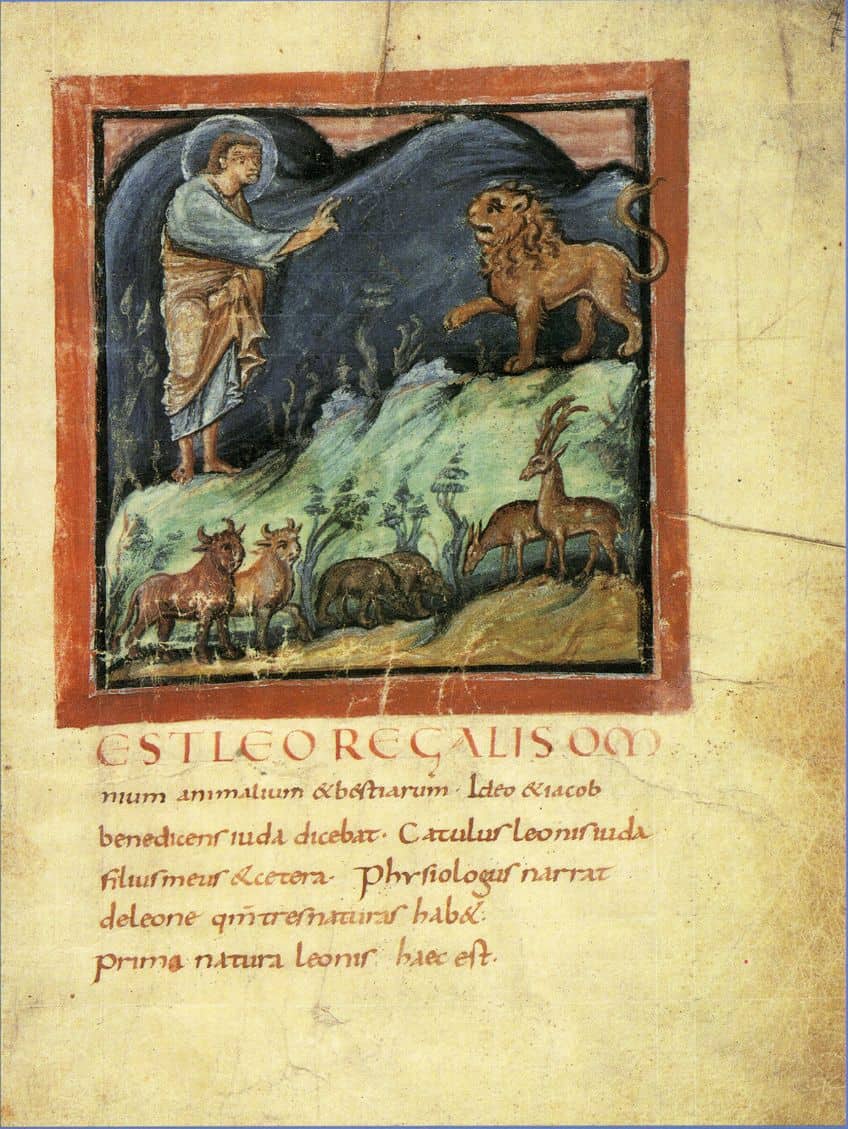
One of the main characteristics of German art from the Carolingian Renaissance was the use of interlaced decorations across the pages of these manuscripts. The rarest surviving narrative artworks include scenes depicted from the Old Testament and ivory reliefs with scenes from the New Testament. The opulence of Carolingian manuscripts was also admired for their treasure bindings, which contained gold and jewels with ornately decorated initials and a few pen drawings. The Bern Physiologus (c. 9th century) manuscript is one example of a heavily illustrated miniature manuscript, believed to have been created for the private library of an important figure. The Rheimsian style was one of the most popular styles of the Carolingian era produced by the Court School of Charlemagne and many other centers. Archbishop Ebbo of Rheims was identified as a revolutionary agent of change in art styles of the time, which can be seen in the Gospel book of Ebbo (c. 816-835 CE).
The Development of German Painting
Since the Carolingian period, there have been accounts of the abundance of murals and wall paintings that have since been lost to antiquity. While most of these were religious in subject, some of the rare images can be found in restoration works that include depictions of the Ark of the Covenant and previous mosaics from Charlemagne’s palatine chapel. The villa of Bishop Theodulf of Orléans, an associate of Charlemagne, was said to have once contained the frescoes of the mappa mundi, the seven liberal arts, and the four seasons. Only fragments of paintings from the Carolingian Renaissance remain in sites across Cologne, Fulda, and Koblenz among a few to mention.
In Switzerland, examples of well-preserved German paintings from the Carolingian period can be found at the Abbey of Saint John at Müstair.
The evolution of German art styles and painting can be understood through its most iconic art movements that brought a wide variety of styles and depth to German art. The Romanesque period, which is dated to around 1000 CE, saw the fusion of Byzantine influences with Germanic traditions, along with Ottonian manuscripts, metalwork, and sculptures that echoed religious themes of the Carolingian and Byzantine art periods. The International Gothic style introduced detailed artworks and narratives, which shaped Medieval German art. Northern Mannerism of the early 16th century introduced elegant styles, leading to the emergence of the Nazarene Movement, which focused on spiritual themes and historical accuracy.
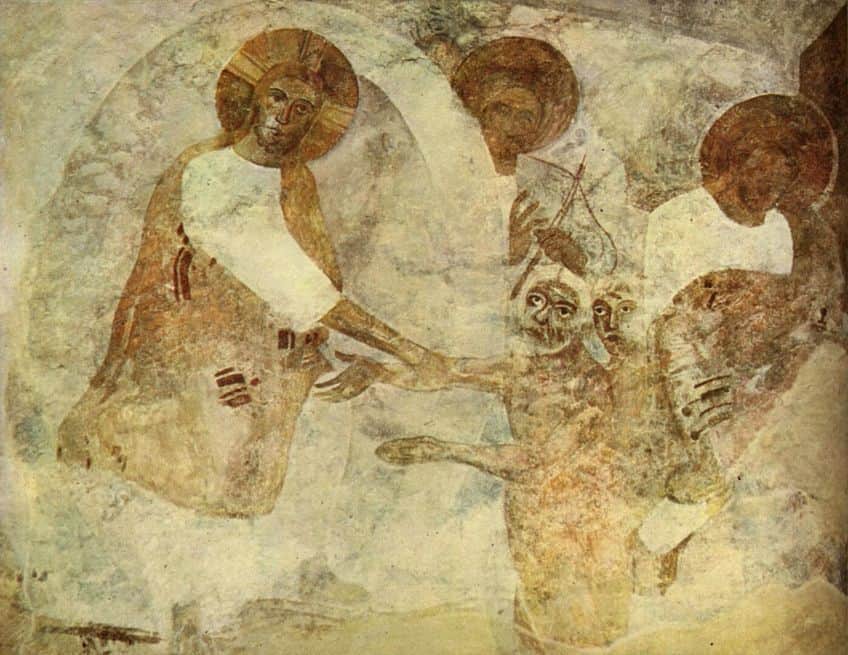
Am Fronleichnamsmorgen (1857) by Ferdinand Georg Waldmüller
| Artist Name | Ferdinand Georg Waldmüller (1793 – 1865) |
| Date | 1857 |
| Medium | Oil on panel |
| Dimensions (cm) | 65 x 82 |
| Where It Is Housed | Österreichische Galerie Belvedere, Vienna, Austria |
The Biedermeier (1815 – 1848) was an era of art that saw responses to political unrest through domestic scenes and themes of peace. Famous paintings such as Am Fronleichnamsmorgen, also known as The Morning of the Feast of Corpus Christi, was a reflection of the Biedermeier Realism painting style that was championed by Ferdinand Georg Waldmüller in the late-19th century.
Waldmüller was reportedly one of Adolf Hitler’s favored artists with a few of his works ending up in the Führer Museum in Linz.
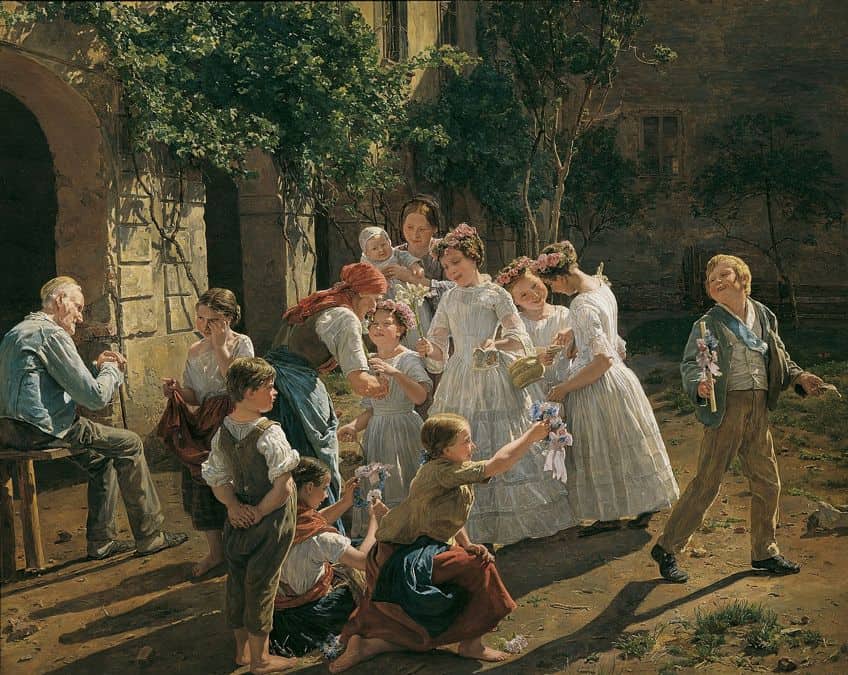
Self-Portrait (1934) by Max Liebermann
| Artist Name | Max Liebermann (1847 – 1935) |
| Date | 1934 |
| Medium | Oil on canvas |
| Dimensions (cm) | 92.1 x 73.3 |
| Where It Is Housed | Tate Gallery, London, United Kingdom |
Movements such as the Berlin Secession (1898) and Jugendstil (1895 – 1910) embraced Modernist painting styles characterized by innovative forms and designs. Self-Portrait by famous leader of the Berlin Secession group Max Liebermann is one example of the artist’s dedication to self-exploration and influence of German Impressionism. Liebermann created this painting a year before his death in 1935 and portrays himself with a resigned expression while painting.
Meanwhile, German Expressionism art was encompassed by Die Brücke (1905) and Der Blaue Reiter (1911), which marked significant shifts in the use of bold colors.
The styles that emerged from The Staatliches Bauhaus art school (1919-1933) piloted modern minimalistic designs that influenced the development of global modern art movements. Among the renowned painters from this period who created many famous German paintings include Max Beckmann, Otto Dix, Ernst Ludwig Kirchner, Franz Xaver Winterhalter, and Max Ernst.
Other major developments in German art include the genre of satirical-grotesque art, which embraced societal criticism and paved the way for German Dadaism, a rebellious movement born from the impact of World War I. Neue Sachlichkeit (c. 1920) pioneered the use of Realism as a tool to portray the grim realities of the post-war period while Plakatstil (c. 1900s) transformed the field of graphic design using bold typography.
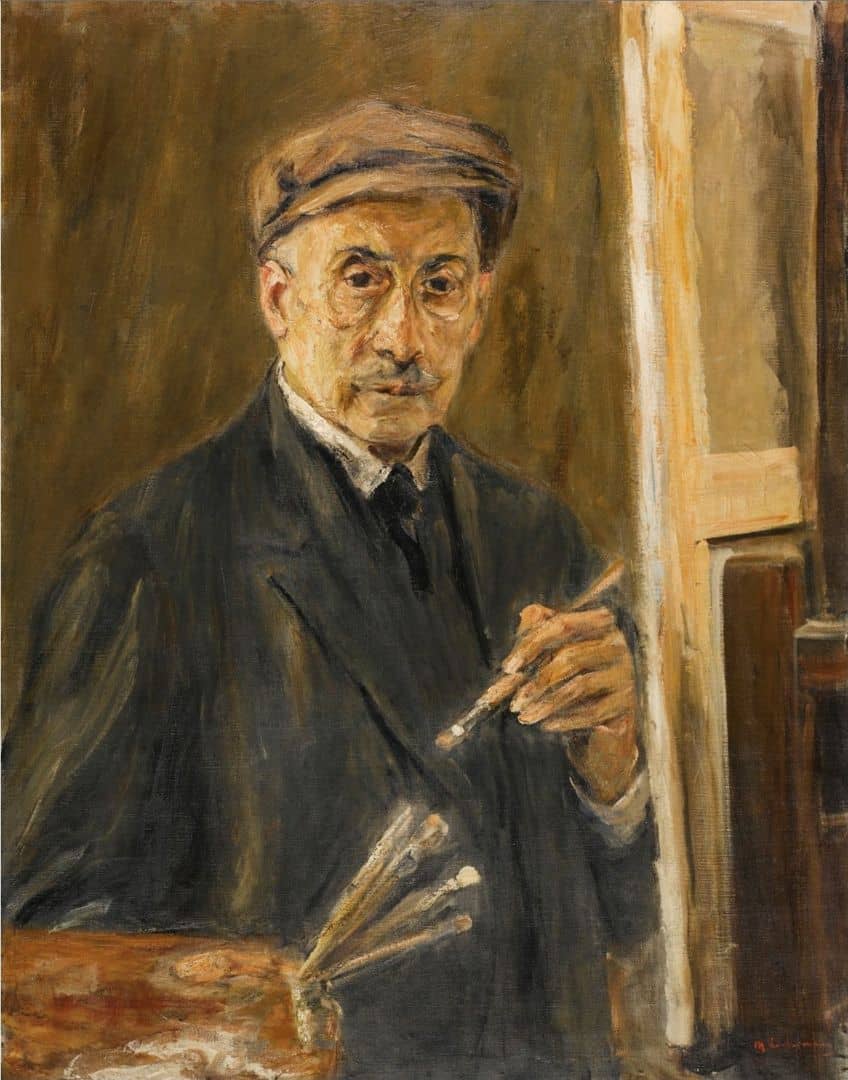
Finally, the rise of German Social Realism was one of the most intriguing art movements that saw the integration of political ideologies and idealized socialist lifestyles in painting. These influential movements have shaped German painting through the reflection of political, social, and cultural changes in German nationality. Among the most famous German painters of the Modern and Contemporary period include Anselm Kiefer, Josef Albers, Michael Bauer, Monika Baer, Tomma Abts, and Gerhard Richter.
Significant German Sculptures
Now that you have a bit of information on the background of German art in painting and general art styles, you can appreciate a quick summary of some of the most significant German sculptures. Below, we have compiled the top three most renowned sculptural structures of German history. These offer insight into the relationship of art to the history of Germany.
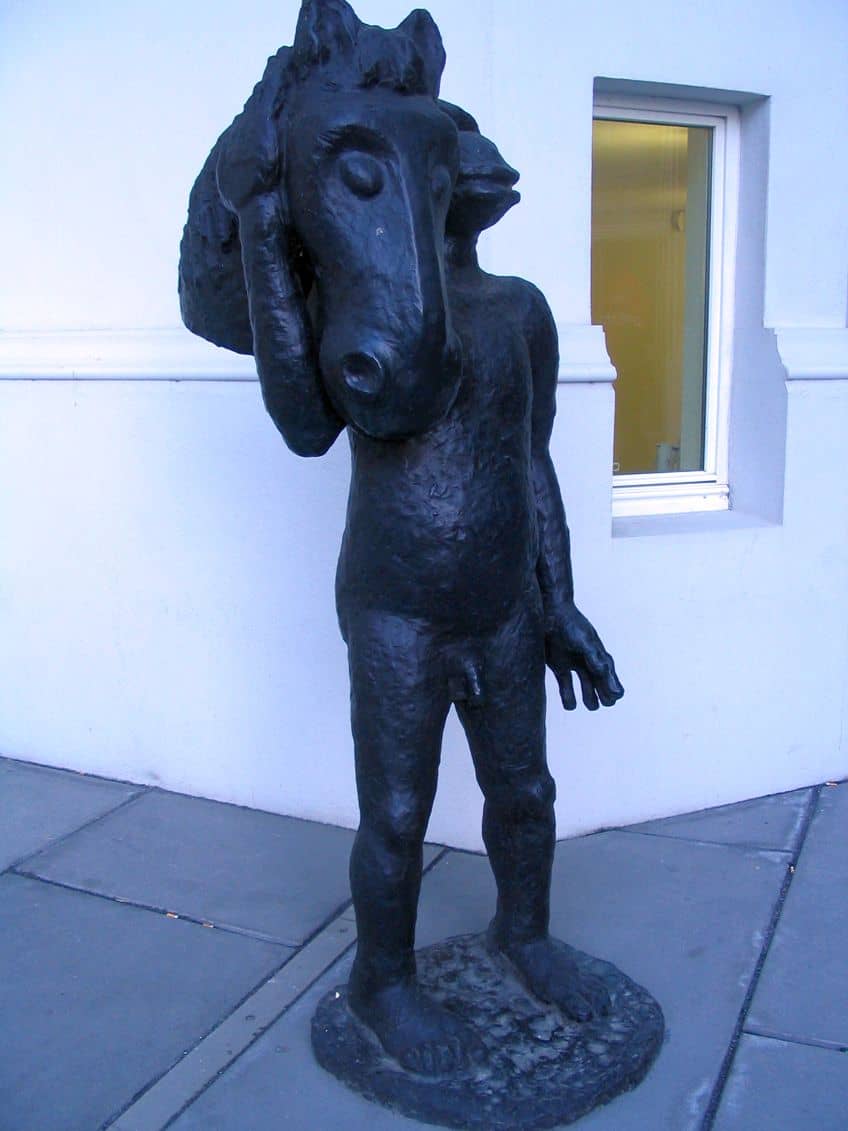
The Lion-man of Hohlenstein-Stadel (c. 35 – 41 Kya)
| Artist Names | Unknown |
| Date | c. 35 – 41 Kya |
| Date of Discovery | 1939 |
| Medium | Ivory |
| Dimensions (cm) | 31.1 (h) x 5.6 x 5.9 |
| Where It Is Housed | Museum Ulm, Ulm, Germany |
Recognized as one of the oldest statues of artistic representation, this famous Lion Man figure is also known as the Löwenmensch figurine. The statue was found in a cave called Hohlenstein-Stadel in 1939 and was dated to have been created between 35 and 41 thousand years ago. It is among the best-surviving examples of zoomorphic art and is affiliated with the Aurignacian culture of the Upper Paleolithic era. Researchers believe that the figure was sculpted using a flint stone knife and ivory from a mammoth.
After decades of fragments being discovered and re-arranged by experts, the figurine was eventually reconstructed and exhibited at the Museum Ulm in Germany.

The Brandenburg Gate (c. 1788 – 1791) and the Quadriga (1793)
| Artist Names | Carl Gotthard Langhans (1732 – 1808) and Johann Gottfried Schadow (1764 – 1850) under King Frederick William II (1744 – 1797) |
| Date | c. 1788 – 1793 |
| Medium | Sandstone and bronze (original Quadriga) |
| Dimensions (cm) | 2600 (h) |
| Where It Is Housed | Pariser Platz, Berlin, Germany |
Among the most famous German sculptures and structures include the monumental landmark from the 18th century called the Brandenburg Gate, which was constructed under King Frederick William II. The Gate is widely recognized as one of the most famous German works of classicism that was inspired by the work of Carl Gotthard Langhans the Elder. The Quadriga sculpture that rests on top of the gate was erected after the completion of the gate in 1793 and was created by Johann Gottfried Schadow.
The two-wheeled chariot being pulled by the four horses was created to welcome peace into the city, with the goddess of victory, Victoria, at the reins.
The sculpture is best known for having been removed three times since its placement and was also damaged significantly during World War II. The original sculpture was so battered that it had to be destroyed and rebuilt with a copy. What makes the gate’s history so intriguing is that it was in a period of isolation following the construction of the Berlin Wall and after its fall in 1989, it had acquired a new meaning of reunification. The sculpture had to be restored once again after the celebrations of the reunification.

The Victory Column (c. 1865 – 1873)
| Artist Names | Johann Heinrich Strack (1805 – 1880), Friedrich Drake (1805 – 1882), and Anton von Werner (1843 – 1915) |
| Date | c. 1865 – 1873 |
| Medium | Red Swedish granite, bronze, sandstone, and gold |
| Dimensions (cm) | 6700(h) |
| Where It Is Housed | Großer Stern 1, Berlin, Germany |
This towering statue in Berlin is recognized as one of the most famous German statues of all time. Known as The Victory Column, this 67-meter-tall sculpture was created in parts over more than eight years. The sculpture was completed in 1873 and has since remained one of the best tourist spots in Berlin. The winged statue depicts the goddess of victory and was initially intended to commemorate Germany’s triumphs over other nations. In its contemporary view, many people associate the statue with the annual Love Parade. The sculpture was designed by Johann Heinrich Strack with the goddess created by Friedrich Drake to memorialize the victories against France, Austria, and Denmark. Later on, additions like the gilded gun barrels and a mosaic were created by Anton von Werner.
Today, locals identify the statue as Goldelse, which translates to “Golden Lizzy”.
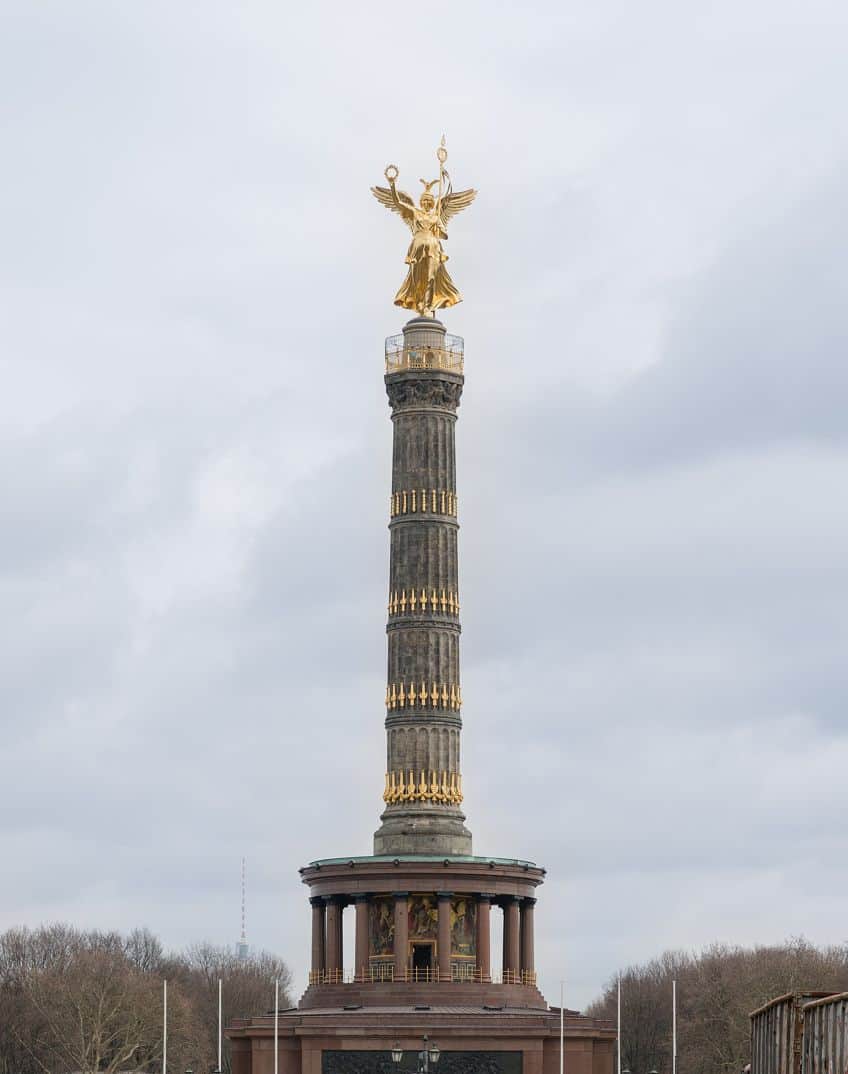
German Folk Art
Many unique types of German folk art have yet to be explored by those who tend to stay within their comfort zones. Below are a few examples of German folk art that hold interesting stories about their origin and history.

Fraktur
The history of German folk art has been traced to the 16th century in Northern European illuminated manuscripts. This style of folk art is known as fraktur and was most prevalent in 18th and 19th-century German-speaking groups from Southeast Pennsylvania. Many manuscripts featured this style of decoration created by using a lettering method of producing “fractures” using many pen strokes.
This calligraphic style found its way to American soil from the 18th-century German immigrants, who continued this tradition in many parts of Pennsylvania.
Fraktur decorations were used to create commemorative documents such as religious texts and life milestones. This type of folk art was practiced by artists of all kinds and was rendered in designs that are described as “whimsical” and vivid. The purpose of fraktur documents was not only to document significant events for German immigrants but to also personalize their experience in America and in a way, preserve an aspect of their culture. Fraktur also illuminated the simple yet playful illustrations and paintings found in these documents that were woven in with the texts.

Erzgebirgische Volkskunst
Also identified as the East German art form called Ore Mountain folk art, this unique folk-art style involves the art of wood carving. Erzgebirgische Volkskunst encompasses a distinct style of art across German sculpture, painting, and figures in East Germany and is directly affiliated with the Ore Mountain songs. The Ore Mountain area is recognized as the largest enclosed folk-art scene in Germany that has long been associated with the history of mining since the 12th century.
To supplement the declining mining economy, people in the area resorted to artistic means of production to boost the economy.
One of the defining motifs of Ore Mountain folk art is the symbol of a miner on a rocking horse as the logo included on many wooden sculptures. Other folk arts in this region include lace-making, woodwork, and straw weaving. One can also find Christmas decorations such as bergmannsfigur (wooden mining figures), räuchermann (smoking figures), weihnachtsengel (Christmas angels), reifendrehen (animals), flügel pyramiden (Christmas pyramids), music boxes, schwibbogen (candle arches), and nutcrackers.
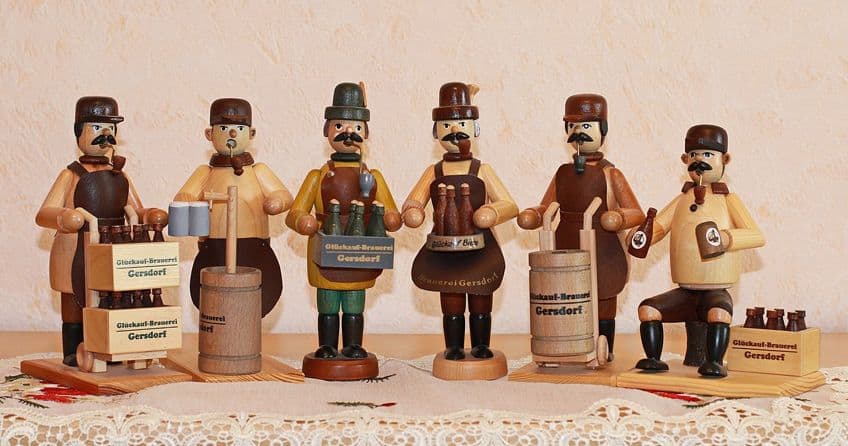
Key Influences on German Art
The creativity of German art and its many major movements did not occur in a bubble from each other. There were many external influences, both artistic and religious, that contributed to the development of German art. Below, we will provide a summarized list of a selection of key influences on German art that have helped propel some of the nation’s most popular visual styles and movements.
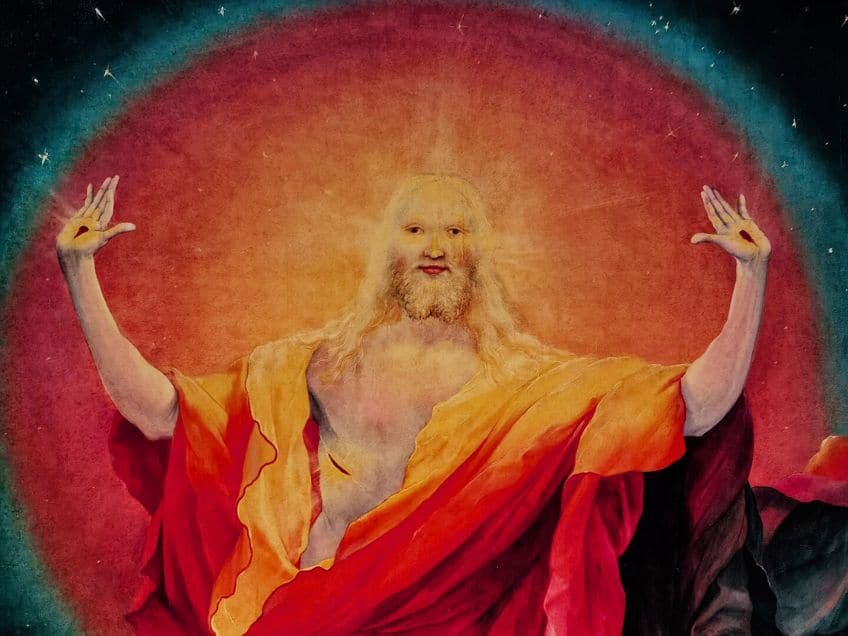
German Mysticism
This genre of German art originated in the Middle Ages, during the 14th and 15th centuries when Christian spirituality was at its all-time high. German mystics such as Johannes Tauler and Meister Eckhart put forward theories of maintaining direct communion with God without the need for institutions and rituals. As such, German mysticism was driven by the notions of divine love, one’s union of the soul with God, and one’s inner experience. Mystics believed in one’s connection to God and a detachment from material desires.
Such beliefs carried a strong influence on art in the sense that they motivated artists to explore art that was more contemplative and reflected spiritual allegories to represent divine illumination, the soul’s journey, and union with the divine.
Elements from nature were often used to represent German mysticism’s view of nature as the manifestation of God and various spiritual truths. German artists also began to adopt techniques to portray light to symbolize God’s presence and moments of enlightenment. German mysticism-inspired art aimed to relay a sort of spiritual ecstasy and the mystic’s passion and joy through expressive body language. Artists like Matthias Grünewald and Albrecht Dürer were influenced by German mysticism, which had a profound impact on Northern Renaissance art. German mysticism was also found in Expressionism, which saw many artists express themes of spiritual yearning and inner emotions.
German Conservatism
This was perhaps one of the most influential cultural shifts in German art that valued the connections between tradition, art, and national identity. German conservatism was built on respect for cultural heritage and established norms that emphasized the preservation of traditional art forms, crafts, and themes. The approach prioritized a continuity with the past and as such respected the study of classical art by emulating the works of old masters. Art was also centered on embodying a sense of national identity through the glorification of the nation’s cultural achievements and history. Conservative institutions encouraged artists to create works that celebrated German culture, patriotism, and folklore while providing artists with a platform.
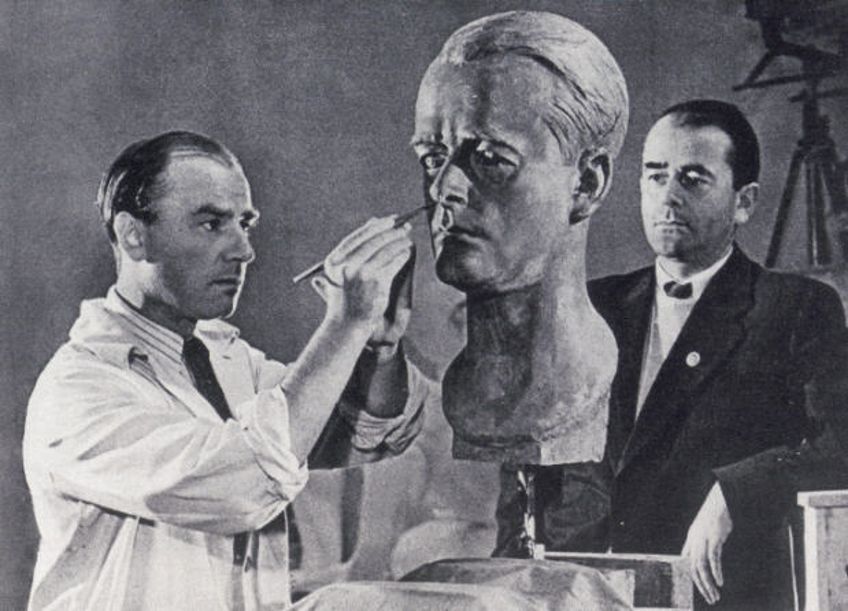
Woodcut and Engraving Book Illustrations
One of the most significant developments in German art and Europe was the introduction of the letterpress and moveable-type printing press in the mid-15th century by Johannes Gutenberg. Woodcut and engraving became key factors in shaping the German art landscape and the field of book illustration since the departure from manuscripts. This meant that information and visual art could be disseminated more easily and was best captured by artists such as Albrecht Dürer, who took full advantage of the new technology. Woodcut illustrations involved the carving of an image onto a woodblock. The artist would then apply ink and press the block on a sheet of paper. This enabled the mass production of images and texts while allowing artists to truly unlock their illustration capabilities. Engraving involved the use of metal plates with fine incisions to showcase the detailed illustrations of the artist. Other figures like Lucas Cranach the Elder used this technique to create images for many types of literature.
Literature also propelled the distribution of artistic knowledge and art styles, while cementing woodcut and engraving as key cornerstones of German art.
The Protestant Reformation
Another major influence on German art and its development was the emergence of the Protestant Reformation, which was led by Martin Luther in the early 16th century. This shift saw a division from the Roman Catholic Church, which impacted the cultures of the day in terms of religious and cultural practices. In art, one of the most impactful changes was the change from religious art as a form of worship, which included the depiction of icons and saints. Germany thus saw a decline in traditional religious art during this time. The Reformation also sparked more translations of the Bible into vernacular languages to enable access to the masses. Artists took note of this in their art to reflect the values of the Reformation and express clarity through portraiture, domestic scenes, and landscape art rather than religious art. This widespread shift in preferred subject matter was a product of Protestant theology, which impacted the development of German art.
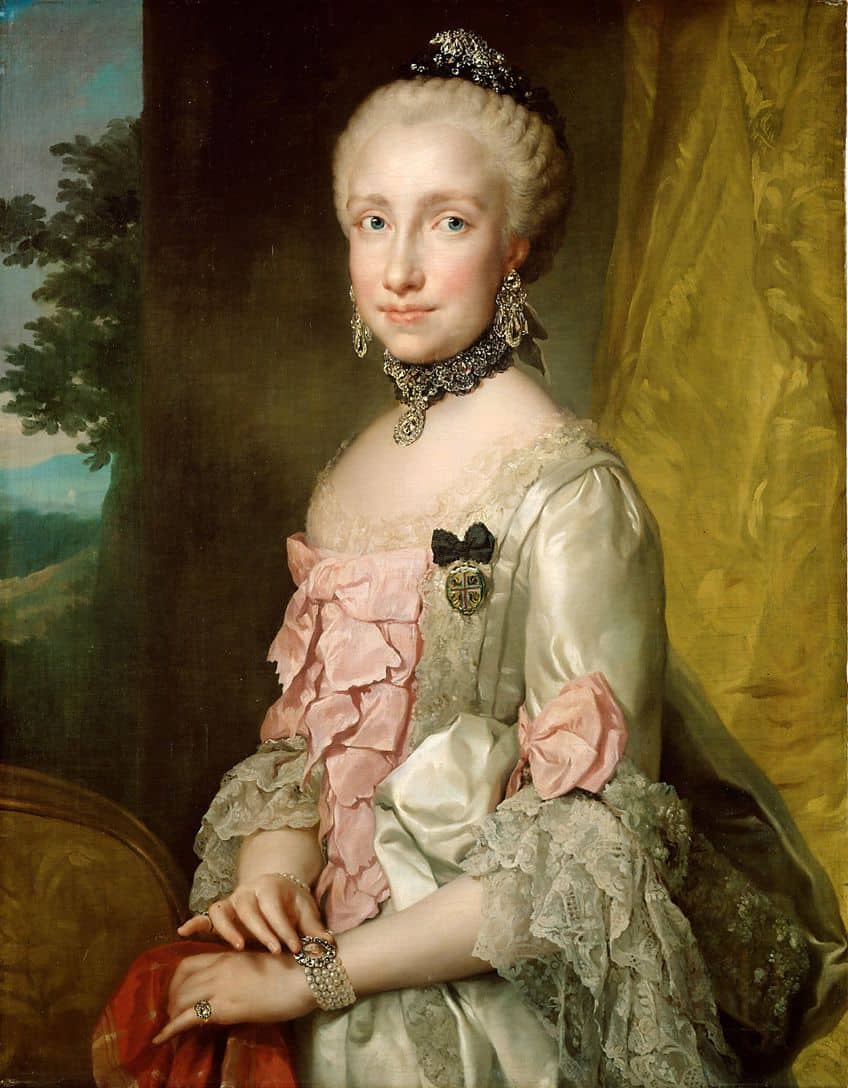
Calvinism
One might also recognize Calvinism, a derivative of Protestantism, which promoted simplicity and morals in its teachings. These teachings were significant since they discouraged the use of elaborate religious images and were instead drawn to direct analysis of the Bible. One can recognize the influence of Calvinism in art that appears more monochromatic in composition and portraits that reflect an individual’s austere dignity. Aside from portraiture, genre scenes, landscapes, and still-life paintings were also new avenues for artists to explore while embracing Calvinist ideals.
Hard work and discipline were at the heart of artistic Calvinist themes to portray frugality, piety, industry, and everyday life.
Porcelain Sculpture
One might expect porcelain sculpture to thrive in Asian circles, however, Germany had taken a special interest in porcelain artworks since the 18th century for its refined visual appeal. This art form was particularly popular in Meissen, where many elaborate works were produced. From decorative sculptures to detailed figurines, porcelain sculpture was also sometimes adorned with gold detailing and was highly coveted by European aristocracy and royalty as a symbol of wealth. Porcelain sculpture was recognized primarily in decorative art circles and contributed to the growth of the porcelain industry in Europe.

Cabinet Painting
Of particular interest to the 16th and 17th century aristocracy and bourgeoisie was cabinet painting. In German art, cabinet painting refers to the creation of small intricate artworks painted on wood panels or small canvases for personal enjoyment. These works were usually displayed in private spaces such as cabinets and small rooms in the homes of wealthy families. Painters who created these works specialized in miniaturized landscapes, genre scenes, and still-life to showcase their technical skills.
Collectors of cabinet paintings valued the exquisite details of the art and their endearing compact size, which were ideal for personal contemplation among the European elite.
The Akademie der Künste and the Düsseldorf Academy
Established in 1696, the Akademie der Künste was among the earliest and most important institutions in Germany that fostered the growth of many writers, artists, and performers. Through creative exchanges and collaborations, artists who attended the Akademie der Künste were known to become influential figures who shaped various movements in German art. The Düsseldorf Academy, which was founded in 1767 went on to inspire a collective known as the Düsseldorf school and played a major role in influencing the art styles of many 19th-century artists, including American students, a few of whom were affiliated with the renowned Hudson River School.

The German Enlightenment
Another 18th-century contributor to significant shifts in German art was the German Enlightenment. During this era, themes such as individual expression, critical thinking, and reason in German art were popular and reflected the leading ideals of the day. Many artists started to explore the beauty of the mundane, nature, and human emotions, which was a stark contrast to the former religious and aristocratic preferences. As an intellectual movement, Germany saw a rise in art criticism across literature, along with new developments in philosophy that championed originality. The German Enlightenment is credited with aiding the development of Neoclassicism with artists like Johann Joachim Winckelmann pioneering the return to classical visual languages in German art.
There was also a widespread focus on education, which led to the emergence of various art academies to nurture artists and prepare the base for modern art philosophies.
Gesamtkunstwerk
Translating to “total work of art”, the term gesamtkunstwerk was used by the famous German composer Richard Wagner in his 19th-century essays. The term is thought to embody the concept of producing a unified artwork that encapsulates and synthesizes all forms of art. This can include visual art, architecture, and music and was a key concept in Wagner’s operas to showcase the beauty of storytelling. He was known to have experimented with the concept in his “opera cycles”, which fused music with elements of theatrical art and poetry. In essence, the concept refers to a holistic art experience where each element plays a major role in the emotional impact of the work or its storytelling potency. Gesamtkunstwerk went on to influence many modern art movements such as Expressionism and Contemporary installation art.
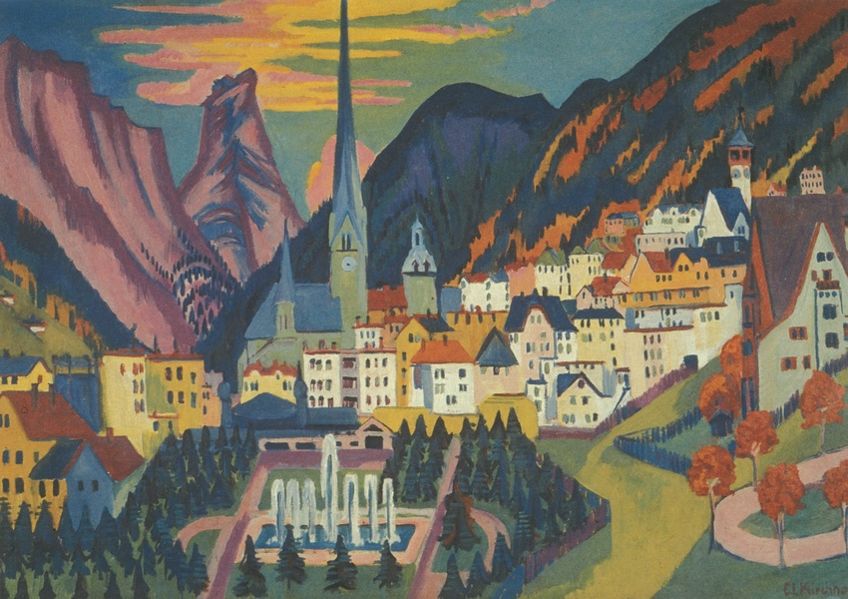
Many unique and fascinating aspects of German art paint a picture of the many influences and external art styles that shape a nation’s art history. By understanding the context of German art, you can begin to grasp the magnanimity of how art can transform and evolve through cultural, religious, and societal shifts.
Frequently Asked Questions
What Is German Art?
The contemporary definition of German art includes all art produced by German artists and German-speaking communities since prehistory. This encompasses figurative sculptures, cave paintings, Gothic art, and other European art styles that influenced the development of German art. Important factors that shaped German art include religious influences, Italian Renaissance styles, local cultures, philosophy, a shift toward nature, simple expressions, and modern art styles.
What Are the Most Famous Art Movements in German Art?
Among the most famous art movements in German art history include the Nazarene movement, New Objectivity, the German Renaissance, German Romanticism, German Expressionism, and Abstract Expressionism.
What Type of Art Is Germany Known For?
Germany is best recognized for various art forms, most notably in painting through movements and styles from the Bauhaus, Northern Mannerism, and German Expressionism art. Additionally, landscape painting and Neue Sachlichkeit art are popular developments in German art.
Jordan Anthony is a film photographer, curator, and arts writer based in Cape Town, South Africa. Anthony schooled in Durban and graduated from the University of the Witwatersrand, Johannesburg, with a Bachelor of Art in Fine Arts. During her studies, she explored additional electives in archaeology and psychology, while focusing on themes such as healing, identity, dreams, and intuitive creation in her Contemporary art practice. She has since worked and collaborated with various professionals in the local art industry, including the KZNSA Gallery in Durban (with Strauss & Co.), Turbine Art Fair (via overheard in the gallery), and the Wits Art Museum.
Anthony’s interests include subjects and themes related to philosophy, memory, and esotericism. Her personal photography archive traces her exploration of film through abstract manipulations of color, portraiture, candid photography, and urban landscapes. Her favorite art movements include Surrealism and Fluxus, as well as art produced by ancient civilizations. Anthony’s earliest encounters with art began in childhood with a book on Salvador Dalí and imagery from old recipe books, medical books, and religious literature. She also enjoys the allure of found objects, brown noise, and constellations.
Learn more about Jordan Anthony and the Art in Context Team.
Cite this Article
Jordan, Anthony, “German Art – Trace the History of Art in Germany.” Art in Context. November 14, 2023. URL: https://artincontext.org/german-art/
Anthony, J. (2023, 14 November). German Art – Trace the History of Art in Germany. Art in Context. https://artincontext.org/german-art/
Anthony, Jordan. “German Art – Trace the History of Art in Germany.” Art in Context, November 14, 2023. https://artincontext.org/german-art/.




